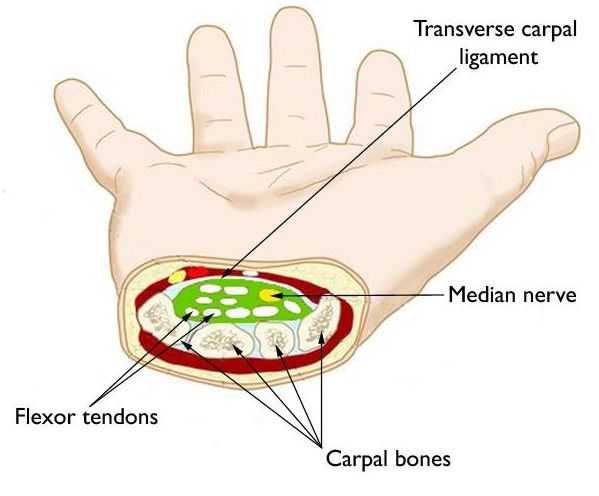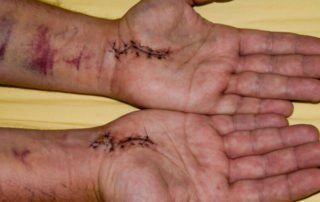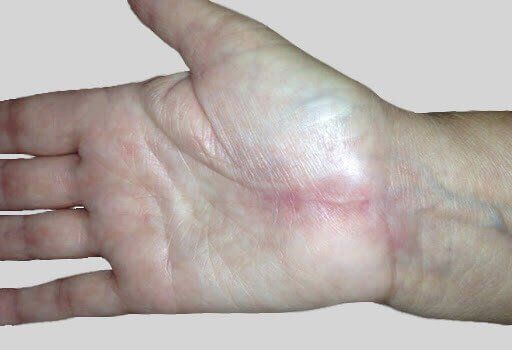Do You Have Bilateral Carpal Tunnel Syndrome?
Table of Contents
- Overview
- What is carpal tunnel syndrome?
- What is bilateral carpal tunnel syndrome?
- How do you get carpal tunnel?
- Be mindful of your other hand
- What does surgery do?
- Precautions against bilateral carpal tunnel syndrome
- Summary
- FAQs
- About
Overview
Having
bilateral carpal tunnel syndrome
means you feel the symptoms (like pain, numbness, tingling) in both hands or fingers at the same time. This isn’t unusual. One of the well-known facts
about carpal tunnel is that it
usually
happens on both hands about 88% of the time. Therefore, bilateral carpal tunnel is more the rule than the exception.
What is carpal tunnel syndrome?
Carpal tunnel syndrome is the second most common hand disorder in the USA after
rheumatoid arthritis. It produces
unusual symptoms such as
pain,
numbness, tingling (pins & needles),
burning,
shooting electric shocks, or weakness in your hand and fingers. It’s especially bad in the thumb and forefinger. But the little finger is never affected.
Carpal tunnel starts out slowly. At first, you might lose sleep because of one or more of these symptoms. As the disorder progresses, symptoms also appear during the daytime. Eventually your hands and fingers feel clumsy and you start to lose pinch and
grip strength. Your hands become clumsy and feel awkward.
The disorder occurs in an area inside the wrist joint, in a passageway called the
carpal tunnel (hence the condition's name). The main structures running through this carpal tunnel passageway are 9
flexor tendons and the
median nerve.
These flexor tendons make your fingers curl and pinch. The median nerve controls sensation to the hand and fingers. Both lie right next to each other inside the carpal tunnel space.
Carpal tunnel syndrome begins when the flexor tendons inside the carpal tunnel passageway become inflamed and swollen. As they swell, the tendons push and
compress
the adjacent median nerve.
When any nerve is compressed it produces these terrible sensations. In fact, nobody is really sure what causes the tendon swelling to begin with. But overusing your hands and fingers
on the job seems to make the condition arise in most people.
What is
bilateral
carpal tunnel syndrome?
Most people who have
numbness, tingling, weakness or pain in one hand eventually see the same problems happen in their other hand. Carpal tunnel syndrome behaves this way
most
of the time. This is
bilateral carpal tunnel syndrome
and it's a huge problem for employers and workers.
Studies show that if you feel these symptoms in one hand, there's more than
80% probability they will appear in the other hand
within 6 months. Fewer people see symptoms begin in both hands at the same.
For decades doctors have recognized that carpal tunnel syndrome will almost always happen in both hands. This is where
preventative measures help a lot. They can reduce the chances of developing bilateral carpal tunnel syndrome on the second hand.
However, most people don’t take preventative measures or precautions. As a result, the other hand ultimately suffers as well.
How do you get carpal tunnel?
Carpal tunnel syndrome is
not
normal. In fact, it's considered by many to be a disease. The reason why it happens in some people and not in others is a mystery.
Carpal tunnel is actually a type of
repetitive stress injury or "tendonitis" inside the wrist joint. The inflamed and swollen tendons described above crush the median nerve causing nerve compression injury. This results in all of the
common symptoms of carpal tunnel syndrome.
Unfortunately, there is no cure for carpal tunnel syndrome. But there are successful remedies to keep symptoms away.
Carpal tunnel surgery
is just one of those remedies. It aims to expand the wrist joint to allow more room for the median nerve (see more below). But this is usually a temporary solution because symptoms return 2 years after surgery in about
50% of patients.
Unlike surgery, other
nonsurgical
remedies aim to treat the root cause of the problem: tendon inflammation. Such remedies include
night bracing,
stretching exercises, and
myofascial release massage.
Be mindful of your other hand
We know that carpal tunnel syndrome is usually a
bilateral disorder. That means it
eventually
happens in both hands. In other words, it's the normal course of this disorder's progression.
Therefore, if you're unlucky enough to get it in one hand, you have a high probability of also seeing symptoms in the other hand at some point. This is why
doctors usually
encourage patients to take precautions in the other hand, before symptoms begin.
What does surgery do?
The most common hand operation for this condition is
open carpal tunnel release surgery. This is when a 1-2 inch long slit on the palm exposes the
transverse carpal ligament which covers the wrist joint.
Cutting this ligament lets the wrist bones spread apart. This gives the median nerve more "breathing room" in an already crowded passageway. The result is that the nerve is “decompressed”. The symptoms related to the compressed nerve (e.g., pain, numbness, tingling) can disappear within weeks after surgery.
Precautions against bilateral carpal tunnel syndrome
Most hand specialists understand that there's a direct relationship between how long symptoms go untreated and the appearance of symptoms in the other hand.
That means many patients do not take the
carpal tunnel warning signs seriously enough to prevent the other hand from eventually suffering.
Therefore, you should
avoid
bilateral carpal tunnel syndrome BECAUSE YOU CAN! Take precautions immediately, which include:
The takeaway message is simple.... If you have signs of carpal tunnel syndrome in one hand, treat it
right now. And start preventive measures on the other hand -- even if it feels normal.
Summary
Bilateral carpal tunnel syndrome is the normal course of this disorder. If you have symptoms in one hand now, chances are more than 80% they will also appear in the other hand. Don't wait for the other hand to worsen. If you have symptoms, treat BOTH hands so the healthy one doesn't suffer too.
FAQs
If bilateral carpal tunnel is almost guaranteed in my other hand, how can I stop it?
Take precautions to not overstress that hand. And be sure to do stretching exercises if and when you do strass that hand.
Why did I get carpal tunnel on my nondominant hand first?
This phenomenon has no explanation. It may be that biomechanical forces are more disturbed in a hand that gets less exercise.
Will myofascial massage, night bracing, and stretching exercises prevent occurrence in my other hand?
It's not a guarantee. But if you also take precautions to protect and not stress your other hand, then your chances of seeing symptoms there decrease dramatically.
About







